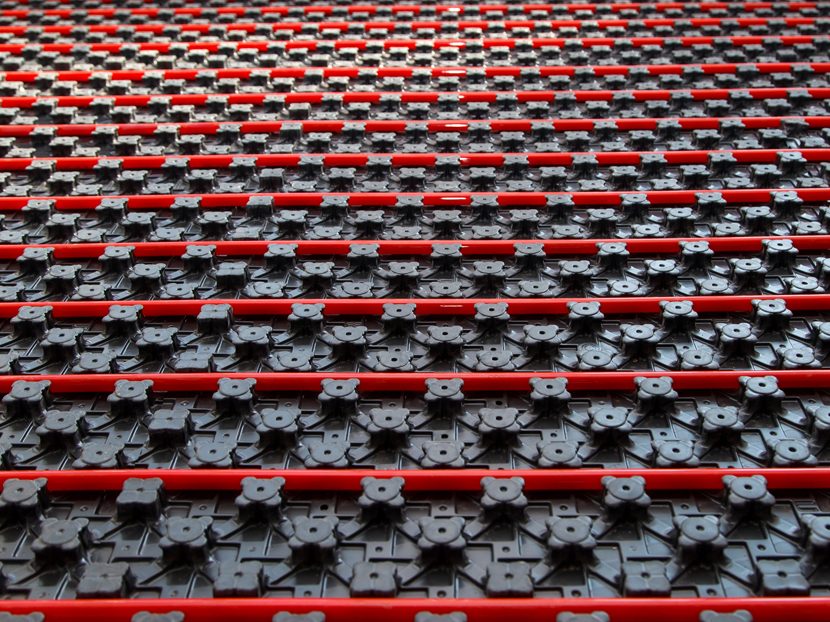2019 Heating Season Preview
New technologies fuel energy-efficiency efforts.

Annually, quarters one and two mark the release of various new products while quarters three and four showcase how many of those product and service changes are affecting markets. PHCPPros reports on these changes through our Boiler Report, Tankless Report, Heating Season Preview and ongoing attendance of industry expos and conferences.
As expected, some trends rose to the surface this year through repetition of industry forecasts and feedback. Two trends surfaced and proved to be directly connected: energy efficiency and technology.
The 2019 PHCPPros Boiler Report revealed that advancements in controls, building automation systems (BAS) and overall use of big data through integrating the Internet of Things (IoT) are changing the market. Professionals are able to design and monitor products while end-users are able to navigate and monitor residential and commercial systems better, which ultimately has led to improved energy efficiency.
The 2019 PHCPPros Tankless Report took this data further by exploring the roots of buy-in to new technologies and ultimately increased energy efficiency from both parties. The report attributed increased environmental awareness from consumers and increased focus on the environmental impact by the government and businesses. The report details the U.S. Department of Energy’s issuance of new energy standards for water heaters in 2015, which increased demand for new energy-efficient heater products such as condensing tankless water heaters.
The DOE estimated that the updated efficiency measures would save 2.6 quadrillion BTUs of energy over the next 30 years and net consumers up to $8.7 billion in savings. In addition, the report noted that large-scale manufacturing of tankless units would drive down their cost and create opportunity for adoption by price-conscious, mainstream consumers.
Energy efficiency and technology naturally resurfaced as trends in preparation of the 2019 PHCPPros Heating Season Preview. The following report addresses those trends while also discussing needs that came up in conversation as it relates to training and equipping the industry to accommodate energy expectations and technology changes.
Technology
Being able to intervene to avoid problems or reduce the severity of them has been an appealing feature of monitoring technology. Looking at longevity, manufacturers have been able to reimagine product performance, maintenance and warranties. Boiler manufacturer Mestek Inc., has been part of the uptick in remote monitoring and applications through its HeatNet platform.
“Mestek’s HeatNet boiler control platform has been the brains behind all of our high-efficiency products for well over a decade,” said Matt Kleszczynski, director of marketing at Mestek. “We also have HeatNet Online, our remote monitoring boiler performance option that helps end-users monitor boiler performance and parameters outside of the large-scale building management systems (BMS) often seen on applications.”
Access to data that comes from applications such as HeatNet will change the dynamic of interactions between end users and professionals, as there will be less guesswork in determining when and why a problem arose.
“As the experts in boiler performance, no one knows better the capabilities of the equipment better than the manufacturer,” Kleszczynski explained. “HeatNet and HeatNet Online are sophisticated but easy to understand. The program control platform is not only designed to maximize boiler performance but also to help prevent system failures that may be the result of factors not associated with the boiler whatsoever.”
Not forgetting the middle man between the system designer or manufacturer and end user, technology is also on the side of the contractors installing systems. Kevin Aries, global product lead at Verizon Connect, pointed out that fleet management technology paired with improvements in system monitoring have helped streamline service planning.
“PHCP industry professionals would benefit from learning more about advanced fleet tracking software for a near real-time view of their fleet’s daily operations,” Aries said. “For instance, if a fleet manager notices a traffic jam on the way to a job, he or she can provide a route workaround so that a driver can reach the destination on time, ultimately improving customer service. As winter approaches and the heating season begins, this software can serve as a planning tool for extreme weather. Through near real-time alerts to drivers and by providing managers the ability and visibility into the safest routes available, PHCP professionals can stay in control when it matters the most to customers.”
Energy Efficiency
The customer has increasingly become the center of conversation when it comes to system design and capabilities, primarily due to the Internet and increased access to information. The DOE has accounted for this by encouraging end users to compare the energy efficiency and annual operating costs of storage, tankless, demand-type and heat pump water heaters before purchasing. The efficiency of water heaters is expressed through the Energy Factor (EF) designation, which the DOE developed to describe how much heat is delivered to the water per unit of energy consumed.
“The advantage of the EF is that it considers not only heat transferred to the water but also standby losses and circulation losses,” noted Michael Tobias, PE, LEED AP, CEM, in his April 2019 PHCPPros article on designing plumbing installations for energy efficiency.
Tobias further clarified, “Typically, the lowest water heating costs can be achieved with a heat pump or an instantaneous gas heater. When both options are compared in terms of cost, the results can vary depending on local electricity and gas tariffs. However, heat pumps do not produce local emissions like gas heaters, and they include a storage tank that serves as a backup. Heat pumps can achieve synergy with solar power when a building is equipped with both technologies.
Tobias continued, “Photovoltaic systems have become very affordable, but their surplus energy output is normally exported to the local grid, and many power companies do not credit exported electricity at the retail price. However, if a heat pump water heater is present, surplus solar generation can be used to store hot water. Even if the demand for hot water is low when there is surplus solar production, a well-insulated tank can conserve its temperature for later use.”
Understanding the types of energy and ways to produce energy have been key to the energy-efficiency conversations, especially for professionals who are taking more into account than the EF numbers the end user may be considering.
“The industry has seen many variables concerning energy efficiency over the years,” Kleszczynski noted. “The vast majority of changes to efficiency standards fall right in line with our philosophy of protecting the environment while providing the most durable equipment on the market. Unfortunately, this has also caused areas of misapplication of equipment whereas the equipment chosen, while maybe the most efficient option, may not be the best solution overall. Systems are being designed to maximize performance but can sometimes be outside the true expectations of a certain piece of equipment.”
Kleszczynski continued, “Here at Mestek, we have a full team of application engineers on staff to assist our customers with the design expectations of our equipment so that the best decision is made as it pertains to the equipment. We provide solutions that best fit the application, taking into account not only efficiency but also durability and overall performance longevity.”
When it comes to heating and energy efficiency, geothermal has been a hot topic in recent years. Yet, it seems that, moving forward, some of the skepticism that initially met geothermal will change among government agencies and, as a result, end users as well.
“People who have installed them in homes and buildings describe geothermal as the Rolls Royce of conditioning systems, partly because they are costly at the front end and they are sometimes coupled with radiant delivery, which results in a comfortable, luxurious indoor feeling,” PHCPPros Columnist Bruce Nagy explained in his column just last month.
Nagy continued, “Public opinion polls by Yale University indicate that Americans of all political stripes are more concerned about climate breakdown than ever before. Geothermal was reinstated in federal clean energy tax credits in early 2018.”
While geothermal is gaining more mainstream acceptance, there are arguments that there are further conversations to have when it comes to energy, specifically as it relates to heating. In preparing this preview, Robert Bean, a retired practitioner in building construction and mechanical engineering and a American Society of Heating, Refrigerating and Air-Conditioning Engineers (ASHRAE) lecturer, brought eXergy efficiency up.
“Energy conservation and efficiency continue to be a major focus of governments and academia,” Bean said. “Meanwhile, although important, most authorities continue to ignore the principles of eXergy efficiency; that being the destruction of work potential associated with fossil-fuel power generation systems. For example, a boiler or furnace operating at its peak combustion efficiency of, say, 97 percent delivers at most only 8 percent eXergy efficiency. This principle is lost on most in the industry.”
Bean went on to contend that renewable systems, such as photovoltaic, hydro and wind power, can no longer be considered fringe influences. He explained that electrification should be at the forefront of the industry’s strategic planning.
Integrated Design
While heating products and systems are changing, curriculum and publications intended to train professionals on these changes are stagnant, Bean stated. Specifically, he noted that the lack of general acceptance of integrated design approaches is keeping the industry from understanding its future and, thus, how to equip current and future professionals for the future.
“I continue to be concerned about the long-term competency of service providers, specifically as it relates to understanding the relationship between architecture, building performance, interior design, and energy systems and occupants,” Bean said. “Breaking out of a design silo culture continues to plague the industry, and it’s exacerbated by a broad illiteracy of integrated design principles across all design professions. For example, many (if not most) hydronic designers, contractors, distributors and manufacturers don’t understand that load calculations are not thermal-comfort calculations. Nor do they understand that heating design, in and of itself, is not comfort design.”
Bean pointed to a lack of understanding and adoption of ASHRAE Standard 55 as an example of the void in knowledge that he has witnessed. ASHRAE Standard 55, Thermal Environmental Conditions for Human Occupancy, specifies conditions for acceptable thermal environments and is intended for use in design, operation and commissioning of buildings and other occupied spaces.
“ASHRAE Standard 55 was first published in 1965,” Bean explained. “And yet, many (if not most) ‘comfort’ service providers have never read it, even though it’s the tool for integration. After 15 years of surveying audiences, I’m still finding that only 1.5 percent of practitioners understand how to apply ASHRAE Standard 55 to their work. We would not accept such illiteracy from other professionals, whether it’s a barber or a physician.”
Training
Bean is passionate about equipping the industry with tools and resources to better understand and appreciate new products and technologies. It is the missing link to progress the industry has been looking to make in the built environment.
“There are no statistics that support the notion that repetitive introduction of new technology has changed market share for hydronics,” Bean said. “Yet, if one looks at training curriculums over the past 30 years, they have been primarily about new equipment and systems, rather than cross-training practitioners on integrated design and indoor environmental quality (IAQ) — the former necessary to achieve the latter, and the IAQ being what society ultimately wants from its architecture.”
ASHRAE has begun to address integrated design in its e-learning, on demand, certification, self-directed training and webcasts. The ASHRAE Learning Institute (ALI) instructor-led training offers a wide range of professional development seminars and short courses to provide high-quality, authoritative and credible technical information from university faculty or full-time professionals.
The course “ASHRAE's Fundamentals of HVAC Design and Operations” offers training that provides participants with instruction intended to accelerate their transformation into productive members of a design, construction, operations or facilities maintenance team.
Bean noted, “I believe the industry is sitting on a golden opportunity but fails to understand the scope of changes necessary to maximize its capitalization on the sequence of events unfolding over the next two to three decades.”





